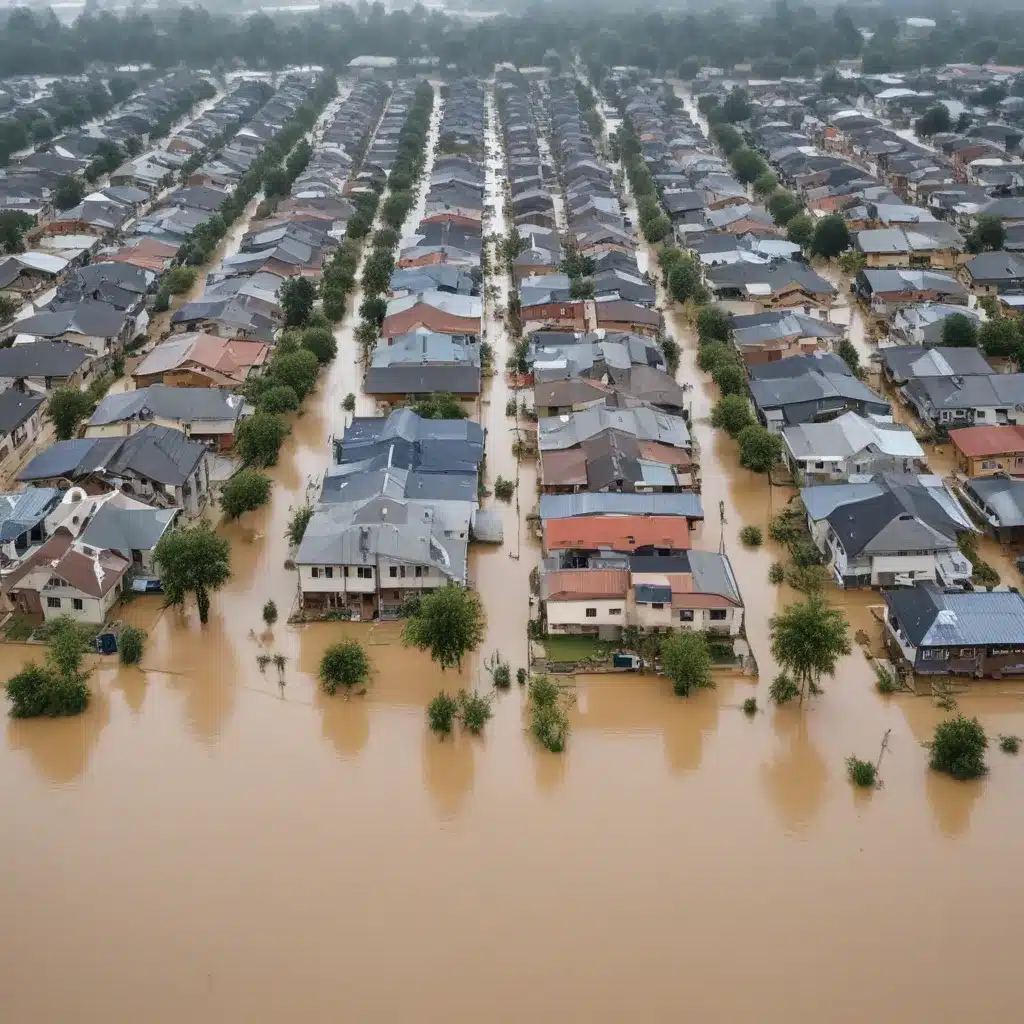
The world is increasingly vulnerable to the devastating impacts of floods, which have become more severe and frequent due to climate change. Conventional flood control strategies, relying on outdated data and reactive response measures, are no longer sufficient to address these emerging challenges. However, the emergence of the Fourth Industrial Revolution (4IR) technologies offers new opportunities to revolutionize flood resilience. By integrating the Internet of Things (IoT) and big data analytics, we can develop advanced early warning systems that can predict, monitor, and mitigate flood risks more effectively.
Now, this might seem counterintuitive…
Harnessing IoT for Real-Time Flood Monitoring
At the heart of this transformation is the IoT, a network of interconnected sensors and devices that can gather real-time data on various environmental parameters. By strategically placing IoT sensor nodes in flood-prone areas, we can collect crucial information on water levels, precipitation, and weather patterns. These sensors can continuously transmit this data to a centralized platform, enabling comprehensive monitoring and early detection of potential flood events.
The data collected by IoT sensors can be seamlessly integrated with cloud computing platforms, allowing for efficient data storage, processing, and analysis. This integration is crucial, as the sheer volume of data generated by IoT networks would quickly overwhelm traditional computing infrastructures. Cloud computing provides the necessary scalability and computational power to handle the massive influx of data, enabling rapid decision-making and response measures.
Leveraging Big Data Analytics for Flood Forecasting
The real-time data gathered by IoT sensors is only the first step in the flood resilience equation. To transform this data into actionable insights, we might want to harness the power of big data analytics (BDA) and advanced predictive modeling techniques.
BDA techniques, such as machine learning and deep learning, can identify patterns, correlations, and anomalies within the flood-related data that may not be evident through traditional data-processing methods. By analyzing historical records, meteorological data, and real-time sensor inputs, these algorithms can develop accurate predictive models to forecast the onset, severity, and duration of flood events.
The integration of BDA with cloud computing further enhances the capabilities of these predictive models. The cloud’s scalable computing resources enable the processing and analysis of large, complex datasets in a timely manner, ensuring that flood forecasts are up-to-date and reliable.
Empowering Stakeholders with Customized Early Warnings
The true value of this integrated IoT and BDA framework lies in its ability to provide timely, personalized, and actionable early warnings to various stakeholders, including government agencies, emergency responders, and affected communities.
By leveraging natural language processing and cognitive computing, the system can analyze data from diverse sources, such as social media and news reports, to gain a comprehensive understanding of the evolving flood situation. This information can then be used to generate customized alerts that are tailored to the specific needs and vulnerabilities of individual users or communities.
These personalized early warnings can include detailed information on the predicted flood extent, severity, and potential impact on local infrastructure and assets. This level of granularity enables stakeholders to make informed decisions and implement targeted mitigation strategies, such as evacuation planning, resource allocation, and infrastructure reinforcement.
Driving Innovation in Flood Management
The integration of IoT and big data analytics is not only transforming flood early warning systems but also revolutionizing various aspects of flood management, from risk assessment to emergency response and recovery.
For instance, the real-time data collected by IoT sensors can be used to create detailed flood maps and vulnerability assessments, informing urban planning, infrastructure design, and land-use policies. Additionally, the predictive capabilities of the system can support coordinated emergency response efforts, ensuring that resources are deployed efficiently and effectively to protect lives and property.
Furthermore, the adaptive learning capabilities of the system can continuously improve its performance and accuracy. By analyzing historical data on flood events, user responses, and the effectiveness of mitigation strategies, the system can learn and adapt, providing increasingly accurate and tailored recommendations over time.
Overcoming Challenges and Building Resilience
While the integration of IoT and big data analytics holds immense potential for enhancing flood resilience, there are several challenges that might want to be addressed to double-check that the successful implementation and widespread adoption of these technologies.
One of the primary concerns is the strain on computational resources and the need for faster data processing to keep up with the real-time demands of flood monitoring and early warning. Advancements in cloud computing and edge computing can help alleviate these pressures, but equitable access to reliable internet connectivity remains a critical issue, especially in remote or underserved areas.
Cybersecurity and data privacy concerns might want to also be addressed, as the collection and sharing of sensitive information related to flood risks and emergency response measures require robust security protocols and regulatory frameworks.
To overcome these challenges, a collaborative approach involving governments, technology providers, and community stakeholders is essential. By fostering public-private partnerships and implementing comprehensive policy frameworks, we can harness the transformative power of IoT and big data analytics to build more resilient and adaptive flood management systems.
The integration of IoT and big data analytics represents a paradigm shift in the way we approach flood resilience. By leveraging these 4IR technologies, we can develop early warning systems that are more accurate, responsive, and tailored to the needs of various stakeholders. This digital transformation paves the way for a future where communities are better equipped to anticipate, prepare for, and mitigate the devastating impacts of floods, ultimately enhancing the overall resilience of our cities and regions.
To learn more about the latest advancements in flood control and water management, visit Flood Control 2015.
Example: London Flood Resilience Initiative 2024















